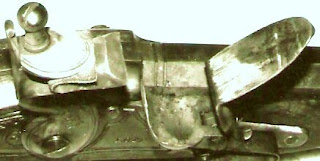I had a request today from a friend re describing how to make cordage, so here is the section from my book "Primitive Fire Lighting, The Fire-Bow".
Making Cordage.
There are many plant fibres that can be used to make cordage, but the only one I have found so far, in the New England Area that is strong enough to withstand the strain of fire-bow fire lighting, is the inner bark of the stringy bark tree. If you do not have this tree available, then you must either experiment with other plant fibres in the area, I have been told that nettle fibre makes a good cordage, or you must use some other resource, such as animal skin, corded strips of clothing material or leather moccasin ties or bootlaces. In an emergency try whatever you have on hand first that you think may be suitable. Don’t forget the length cut from the leather waist belt. If it is not long enough then you can splice or tie two lengths together. Just keep the join to one end and not in the middle of the bow.
To use the inner bark of the stringy bark tree you must first strip away the outer bark. If you use a tomahawk or hatchet or knife to remove the outer bark you may find that the inner bark will come away with the outer bark. In which case peel away the inner bark from the outer bark afterward. If you pound on the outer bark with the poll of your tomahawk or using a rock, the outer and inner bark will peel away from the tree relatively easily. Whether stripping the inner bark from the tree trunk or the outer bark, the tree must be alive and the bark in a “green” state and the lengths of inner bark must be in as long a length as you can produce.
The material you use to make the cordage bowstring has to be folded length-ways. If you have enough length to make the string in one piece once folded, then fold to equal lengths. If however you do not have enough length in the one piece, and you need to splice in another length, then fold the material with one side longer than the other.
Now hold the length of material/inner bark between your teeth at the fold. Holding one length in one hand and the other side in the other hand twist both lengths separately in the same direction by rolling them between thumb and forefinger. Once each length is twisted quite tightly, fold them over one another in the opposite direction to the way you were twisting them. Do this until you reach the required length you need.
Fig.16.
The author making cordage using strips of cloth, by holding the upper end between his teeth, whilst twisting with his fingers(and yes, if you are not careful, it is easy to cord ones beard into the cordage!).When the cordage gets longer, you can take it from your teeth, and place it beneath your foot.
If you have to splice in an extra length, then stop short of the end of the shortest length, and separate the end into a fork. Now taking up a new piece of material/inner bark, split this into a fork also and slip these forked ends into one another and continue twisting and cording.
Fig.17.
Showing the splicing of a join, and the completed cording of that join.
This cordage may only last the one time, so each time you want to make fire in this way you may need to make a new bowstring. Using stringy bark I have occasionally been able to use the same string twice, but don’t depend on it. In a survival situation you need to make sure you keep the fire going once lit. If you have to move for any reason and take the fire with you, use a large piece of tinder, or a long length of the yacca flower stem, and set it smouldering. This will last a good while and you can carry it with you and use it to start your next fire.





















.JPG)

.jpg)
.jpg)

.JPG)

















.JPG)




